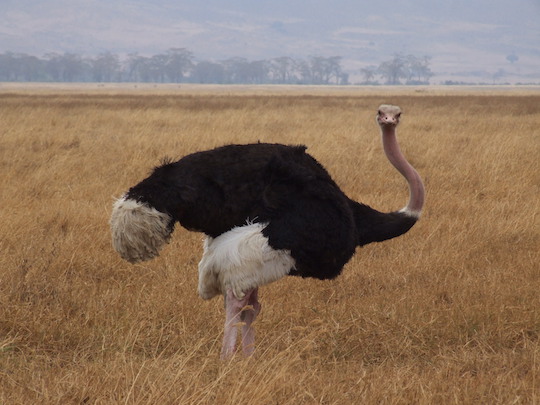I came to Montana from Iowa by way of New York City. Two of those places discourage staring. When I began to think that a larger-than-usual number of strangers in Montana’s restaurants, shops, and passing vehicles were staring at me, I came to the reasonable conclusion: I was insane. Because I am a crazy person, I think people are staring at me when all they want is to eat pancakes with their weird families. As a rule, when you move someplace and develop theories about what people are like there, you are wrong. But then I read this profile of Montana travel author Russell Rowland implying “the stare” is a thing:
Rowland said during one of his favorite interviews, Fallon County farmer Jerry Sikorski invited him to smell his soil. Others, mostly people in tiny eastern Montana towns, gave him “the stare.”
“Those who encounter ‘the stare’ should not panic,” Rowland wrote. “Although at first glance, the stare suggests that you might want to turn around and go back to your car, the explanation is pretty simple. The stare comes from seeing the same 25 or 30 people day after day for the past five or 10 years.”
That was my explanation, too: as population density goes down, the social acceptability of eyeballing me in the laundromat goes up. But this explanation boils down to “they’re staring because they’re rubes.” I don’t want to think that.
A comprehensive linguistic survey I conducted by talking to my girlfriend also reveals that Montanans do not generally use the expression “study long, study wrong.”1 That saying is useful in New York, where one must occasionally and succinctly remind people they live in a society. Here in Western Montana, though, it is not frequently said. Most of the people I’ve asked have never heard it before.
It’s like learning that a tribe in the rainforest has no word for embarrassment. It must mean something. Perhaps the good people of Western Montana don’t say “study long, study wrong” and do mad dog me in the DMV because they don’t consider staring rude.
That hypothesis is quickly falsified. Stare at a Montanan until he or she says something, and write down whether it’s friendly or not. Montanans don’t like to be stared at any more than New Yorkers. Perhaps it’s not that people who live at lower population densities think staring is cool. Perhaps people at lower densities can get away with being rude, and unpleasant social habits are not selected out.
Obviously that doesn’t happen at the cognitive level. No one performs the calculus, “Here I am in Montana, where bad manners will be overlooked.” But nonverbal social habits are learned by imitation and change slowly. If such habits evolve over time, the pressure against staring at strangers has been relatively low. A village of 200 is not going to kick anyone out for managing eye contact badly. But a city of eight million teaches us to shut out such people very quickly.
If you lived in the Missoula of 1880, population 347, you probably wouldn’t tell Clem the Haberdasher to stop staring at you. He wouldn’t stare, because he knows what you look like. But you still wouldn’t snap at him if he did, because what happens when you need to buy a hat? Clem’s Luxurious is closed to you, and Hatsmen of Butte is days away. Such a society would have no more use for “study long, study wrong” than for replacement light bulbs. The need to efficiently be a dick to strangers simply had not developed.
Habits change slowly, and habits regarding the enforcement of habits change even slower. Missoula has been bigger than a YMCA summer camp for only five generations, and that’s a short time to change conventions of nonverbal behavior. So the people of Montana aren’t hicks. Their great-great grandparents were hicks, and if they had invented and then taken a picture, it would have lasted longer.





I dunno…on the few times I’ve had the pleasure of encountering them, I’ve found New Yorkers to be astonishingly rude. As unfalsifiable generalizations go it’s just as satisfying to say that, in a village of 200, rudeness is easily noticed and quickly corrected, but a city of eight million offers many dark corners for dickishness to take root.
Maybe I’m just staring because you’re dead sexy, is what I’m saying.
“I was met unexpectedly by the Montana Face….What I found seemed at first glace, reticent, sullen, weary–full of self-sufficient stupidity; a little later it appeared simply inarticulate, with all the dumb pathos of what cannot declare itself; a face developed not for sociability or feeling, but for facing into the weather.” –Leslie Fiedler